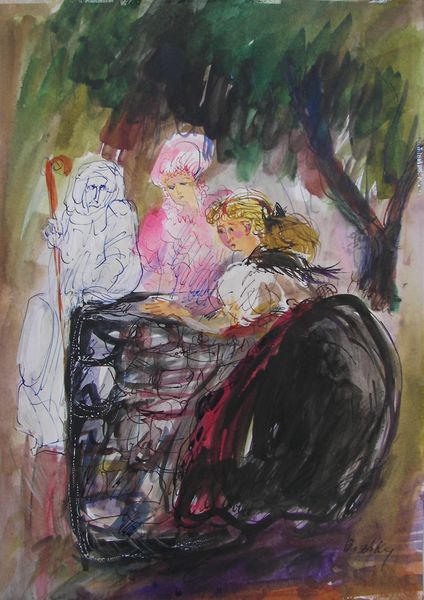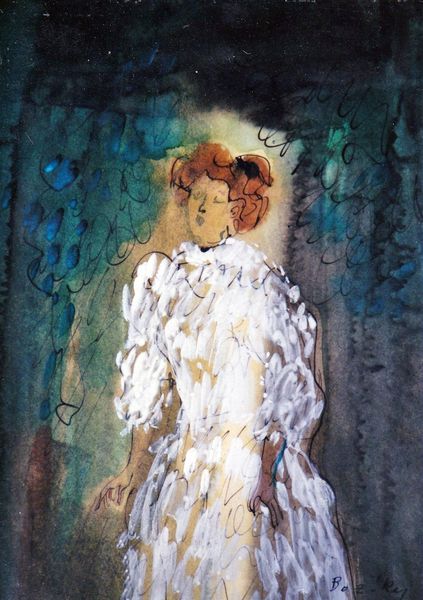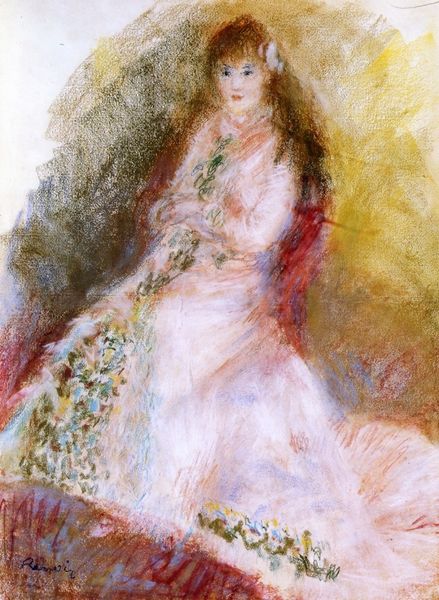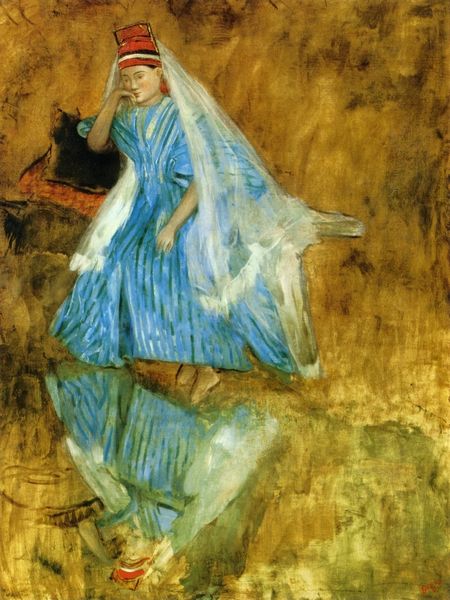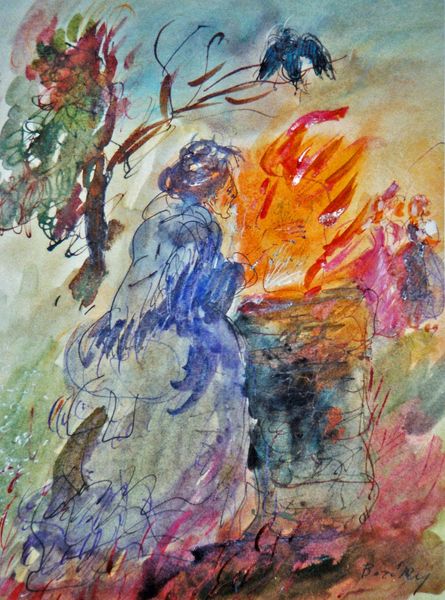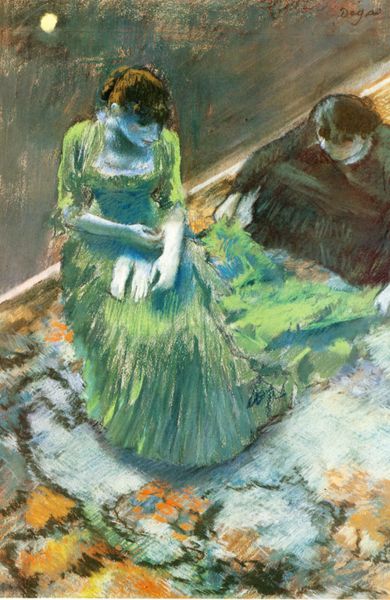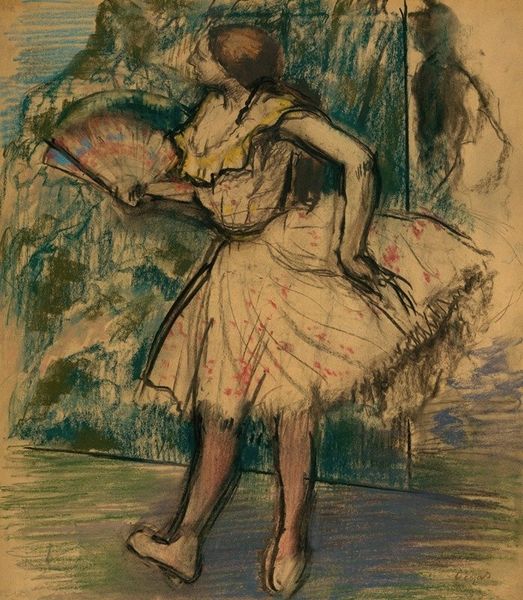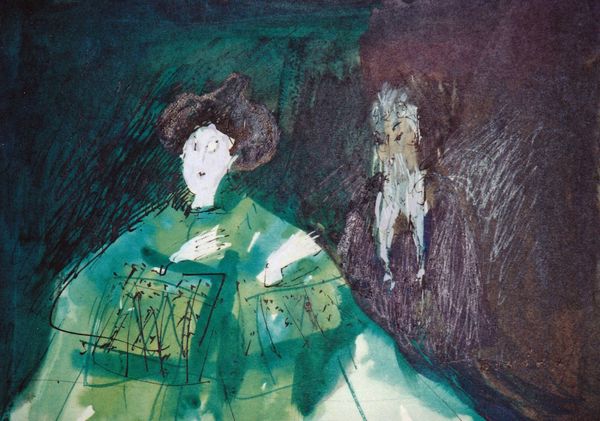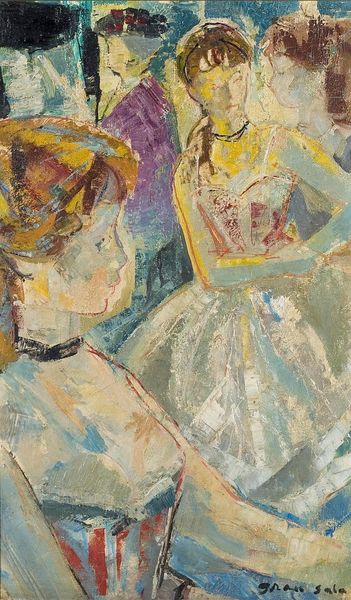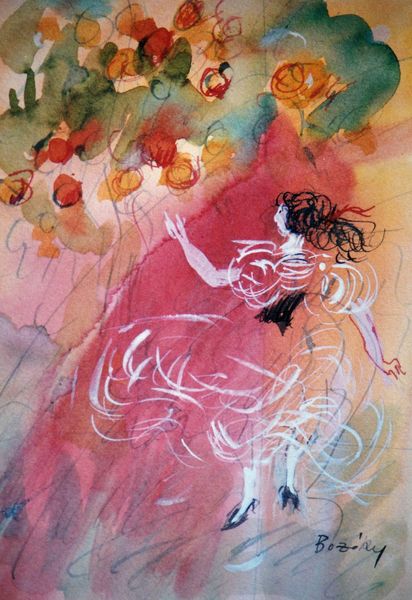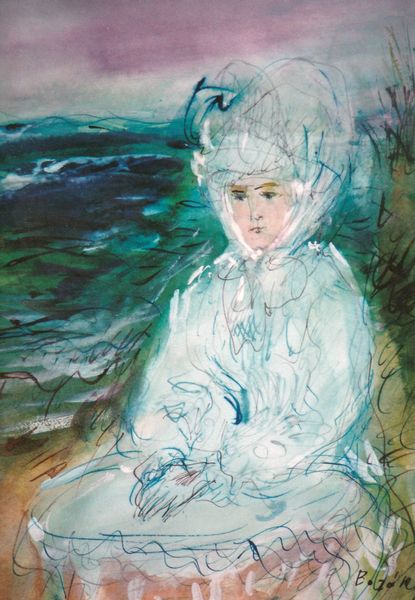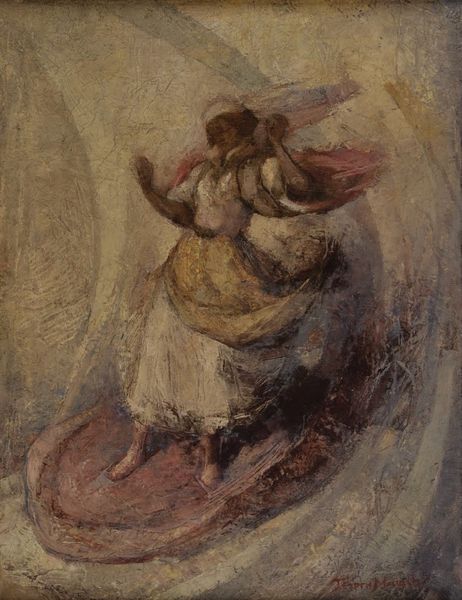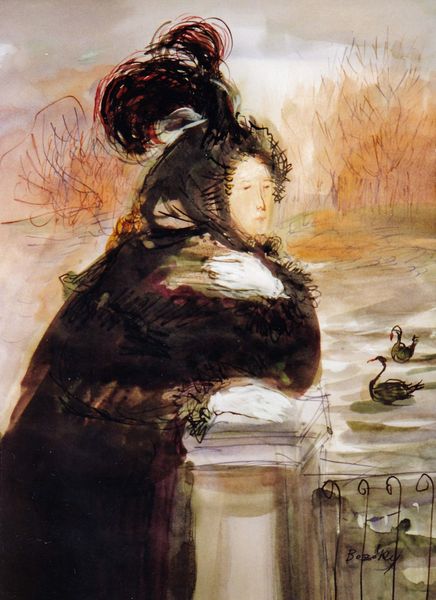
#
abstract expressionism
#
abstract painting
#
girl
#
possibly oil pastel
#
oil painting
#
fluid art
#
acrylic on canvas
#
underpainting
#
paint stroke
#
painting painterly
#
watercolor
Copyright: Maria Bozoky,Fair Use
Curator: The work before us is titled "RILKE: The Sonnets to Orpheus" by Maria Bozoky. It appears to be a mixed media work, possibly watercolor, pastel and ink, though the materials are not fully specified. Editor: My first impression is melancholic and a little haunting. There's a fragility in the linework that feels almost dreamlike, especially the figure in the dress. It evokes a sense of nostalgia and lost moments. Curator: Yes, the dreamlike quality is potent. Looking at the motifs, we see the archetypal 'anima' figure turned away from us; the almost classical shape of a girl, standing near organic imagery -- like a tree. The figure appears ephemeral. Given the title references Rilke’s poetry, it might reflect the poet's explorations of death, transformation, and the power of art. Editor: Absolutely. Considering that Orpheus’s myth explores creation and loss, one could argue this piece confronts female artistic suppression through erasure; the shadowy form and the backward glance, the girl becomes secondary to Rilke. Or maybe it is just a portrait of someone walking towards their animal familiar in a garden... Curator: Perhaps; yet in both contexts there's also the motif of the "shadow side," or the inner unconscious coming to be more fully realized. In psychoanalytic theory, both could express different sides of integration and psychological balance. But look too at the black cat... often an animal symbol of crossing over or intuition. This might represent guidance of our anima into form and light. Editor: True, that's certainly another potential reading through a Jungian lens. We might be seeing something about hidden desires, and perhaps reclaiming feminine agency using powerful ancient symbols. Still, my activist's brain sees the title's connection as potentially eclipsing and obscuring any agency this female image may have. It speaks to broader struggles around artistic acknowledgement of female works through the ages. Curator: An insightful take. Perhaps this interplay between light and shadow is precisely the point, creating visual depth in symbolism. The figure isn't fully present, and the symbols create more of a felt emotional state than a concrete portrait, and it asks the viewer to decide if something is coming into, or exiting the garden of our own psyche. Editor: Right, and the painting almost becomes a canvas onto which viewers can project their interpretations of societal tensions. Very interesting, the layers it contains and evokes. Curator: A work with lingering impressions for consideration.
Comments
No comments
Be the first to comment and join the conversation on the ultimate creative platform.
